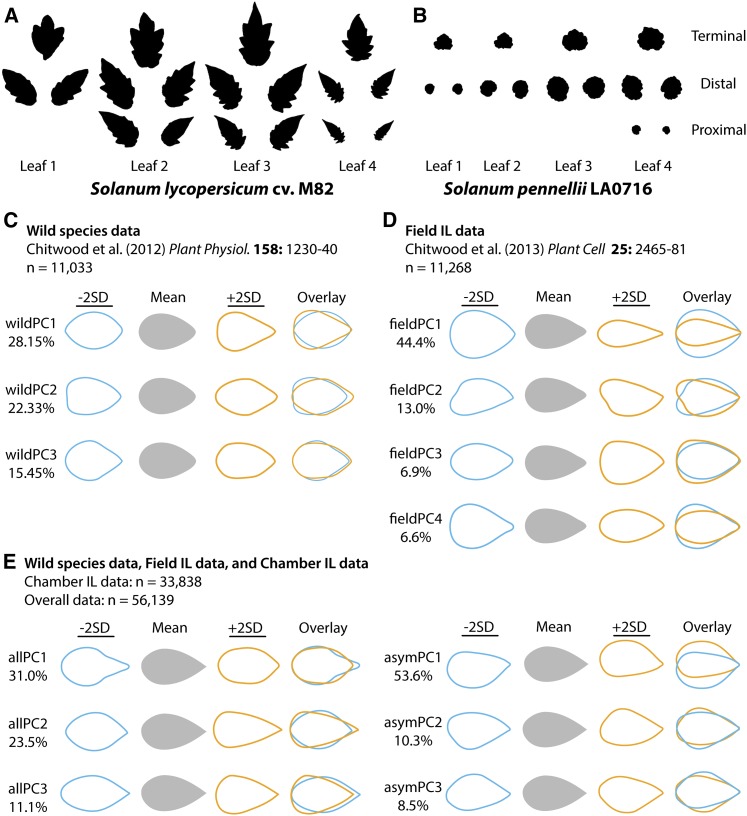Figure 1.
PCs Describing Shape Variance in Leaves of Tomato and Wild Relatives.
(A) and (B) Example of leaflets collected from (A) S. lycopersicum (domesticated tomato) and (B) S. pennellii. Leaflets from chamber-grown S. pennellii ILs were similarly collected, sampling the first four leaves and across the proximal-distal axis of each leaf.
(C) to (E) PCs resulting from EFD analysis from this and previous studies. allPC1 is associated with the trifoliate nature of tomato leaflets created by three prominent lobes, allPC2 in part describes the distribution of laminar outgrowth along the proximal-distal axis, and allPC3 aligns with shape variance producing bulging at the base of the leaflet. Blue and orange outlines represent eigenleaves (theoretical leaf outlines representing shape variance for each PC) −2 and +2 sd, respectively, along each PC axis. See Supplemental Table 1 for descriptions and prefixes for different PCAs used in this study.
(C) PCs from Chitwood et al. (2012a) (“wildPCs”) sampling leaflets from the first four leaves of eight accessions each of S. arcanum, S. habrochaites, and S. pennellii.
(D) PCs from Chitwood et al. (2013a) (“fieldPCs”) sampling field-grown leaflets of the S. pennellii ILs, and
(E) PCs resulting from a combined analysis of >33,000 chamber-grown leaflets from the S. pennellii ILs new to this study and leaflets from Chitwood et al. (2012a) and (2013a) (“allPCs,” measuring symmetric shape variance and “asymPCs” measuring asymmetric shape variance).

